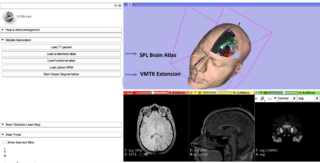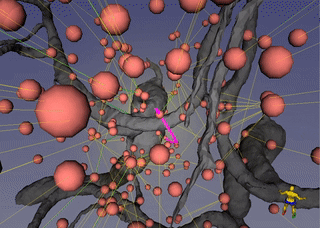Project Week 25/Steerable Catheters Path Planner Extension for Brain Surgery Applications
Back to Projects List
Key Investigators
- Alberto Favaro (Polytechnic University of Milan, Italy)
- Marlene Pinzi (Imperial College, UK)
Project Description
| Objective | Approach and Plan | Progress and Next Steps |
|---|---|---|
|
The project consists in a reliable and time-efficient pre-operative path planner for steerable catheters, intended to be used in neurosurgical applications. The algorithm estimates a pathway from an entry to a target point within the 3D space defined by the brain volume in accordance to specific optimality parameters and constraints, as the geometric and kynodynamic characteristics of the catheter, the distance from inner brain structures (e.g. the main blood vessels) and the total path length. |
The workflow consists in the following steps:
|
Goals achieved:
Future steps:
|
Illustrations
| Eden2020 steerable catheter: |
Video
Background and References
The proposed path planning solution finds a possible direct implementation in the EDEN2020 project, a recently founded EU project (GA No. 688279), which aims to develop an innovative system from treating glioblastoma – a highly malignant tumor involving the central nervous system – through a pioneering steerable catheter (see figure above).
- Gammell, Jonathan D., Siddhartha S. Srinivasa, and Timothy D. Barfoot. "Batch informed trees (BIT*): Sampling-based optimal planning via the heuristically guided search of implicit random geometric graphs." Robotics and Automation (ICRA), 2015 IEEE International Conference on. IEEE, 2015
- Jalel, Sawssen, Philippe Marthon, and Atef Hamouda. "A new path generation algorithm based on accurate NURBS curves." International Journal of Advanced Robotic Systems 13.2 (2016): 75.


